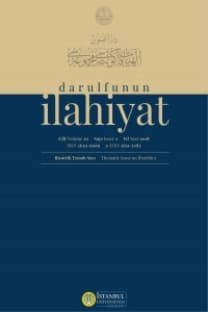“Narrowness” and “Broadness” of Bioethics: on some Middle-European and Mediterranean Initiatives
By the end of the 20th century, bioethics had been twice invented: first by the German theologian Fritz Jahr in1926, and then by the American biologist Van Rensselaer Potter in 1970. These two versions of bioethics,however, have not been the only ones: what became a mainstream was a form of bioethics propagated by theGeorgetown University Kennedy Institute of Ethics, narrowed-down to biomedical ethics. New initiatives andideas appearing primarily in Europe at the beginning of the 21st century - in Spain, Italy, Croatia and elsewhere -guarantee a dynamic development coming back to the broad origins of bioethics as conceived by Jahr and Potter.
Anahtar Kelimeler:
Narrowness, Broadness, Bioethics, Middle-European, Mediterranean Initiatives
“Narrowness” and “Broadness” of Bioethics: on some Middle-European and Mediterranean Initiatives
By the end of the 20th century, bioethics had been twice invented: first by the German theologian Fritz Jahr in1926, and then by the American biologist Van Rensselaer Potter in 1970. These two versions of bioethics,however, have not been the only ones: what became a mainstream was a form of bioethics propagated by theGeorgetown University Kennedy Institute of Ethics, narrowed-down to biomedical ethics. New initiatives andideas appearing primarily in Europe at the beginning of the 21st century - in Spain, Italy, Croatia and elsewhere -guarantee a dynamic development coming back to the broad origins of bioethics as conceived by Jahr and Potter.
Keywords:
Narrowness, Broadness, Bioethics, Middle-European, Mediterranean Initiatives,
___
- -
- Yayın Aralığı: Yılda 2 Sayı
- Başlangıç: 1925
- Yayıncı: İstanbul Üniversitesi İlahiyat Fakültesi
Sayıdaki Diğer Makaleler
Ahlakî “Yapılmamalı”, İnsan Geliştirme Teknolojilerindeki Yapılabilirliği Sınırlandırmalı mı?
Dört Mezhebe Göre Namazlarda Kunût Duası Okumanın Keyfiyeti ve Hükmü
Yakup MAHMUTOĞLU, Mustafa ATLAN
Kara Seydî-i Hamîdî (v. 912/1507) ve Umûr-ı Âmme’ye Dair Risâlesinin Tahlil, Tahkik ve Tercümesi
“En Tehlikeli Fikir?” Transhümanizm Üzerine İslami Mülahazalar
Canlılar ve Yaşam Alanları Geliştirmede Biyoetik ve Biyopolitik
Ölme Hakkı: Fritz Jahr ve İslam Hukuku Açısından Mukayeseli Bir Yaklaşım
İbn Ebi‘l-İsba‘ ve Bedî‘ İlmindeki Yeri
Çözümsüzlüğün Temellendirilmesi: Çelişen Paradigmalar Karşısında Biyoetik
